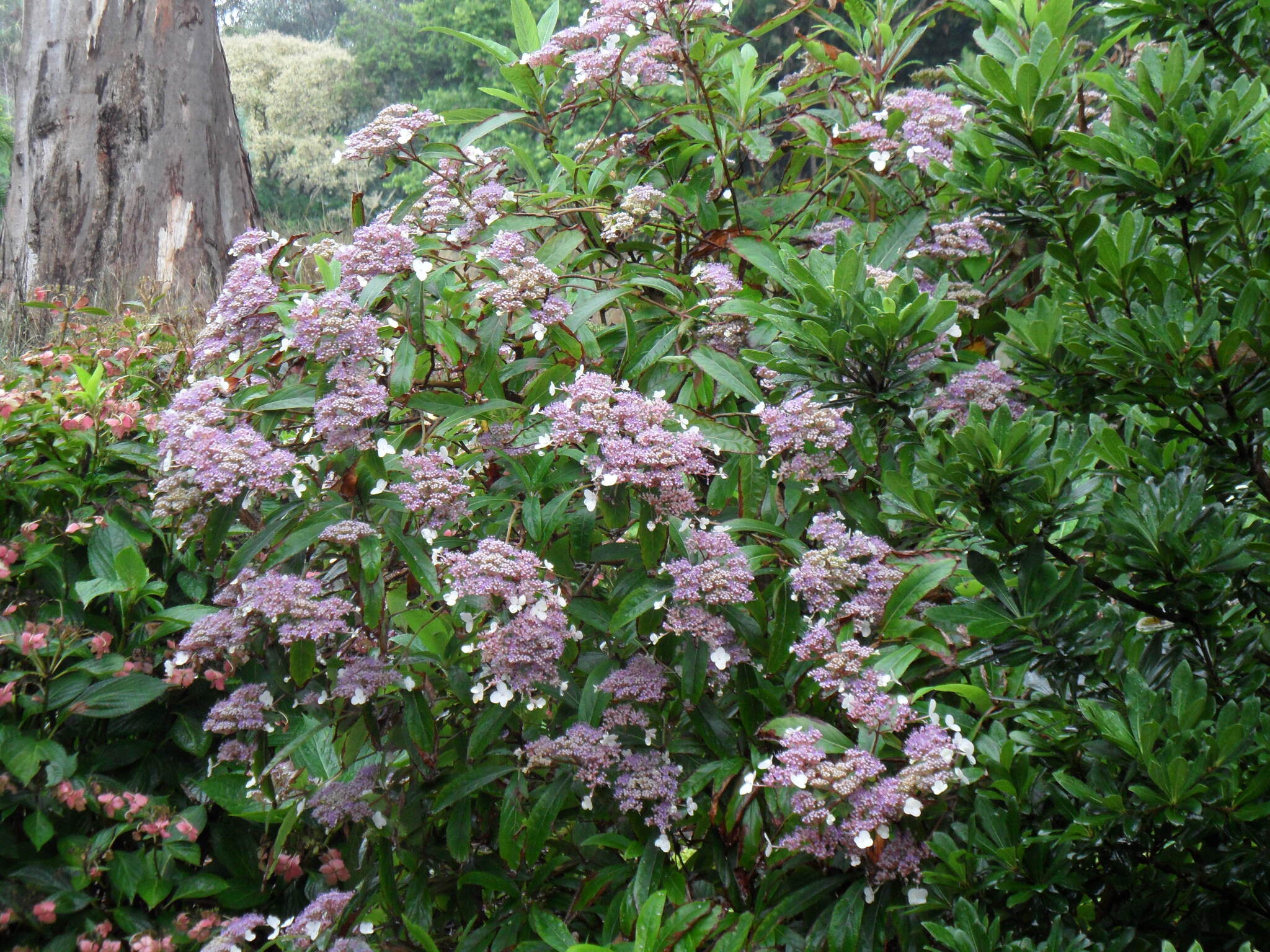
Deciduous shrub or occasionally small tree 3-4 m tall. New growth hairy at first. Leaves lanceolate to narrowly ovate, toothed, a few hairs above, softly downy below. Flower clusters more or less flat, to 25 cm wide; summer. Sterile flowers few, to 2.5 cm wide, sepals 4, rounded, toothed or entire, pale lilac to white. Fertile flowers numerous, small, pinkish purple; mid- to late summer. Ovary inferior. Fruit capsule to 3 mm wide.
A variable species with many horticultural selections.
H. sargentiana Rehd. is occasionally grown; it is distinguished by the new shoots having a thick, mossy covering of hairs and transparent bristles. Syn. H. aspera subsp. sargentiana (Rehder) E.M. McClint.]
subsp. aspera Within this subspecies can be included plants formerly placed in H. villosa Rehder and now referred to the Villosa Group, originating from Sichuan, China. Bushes are shorter and more open with narrower stems and narrow tapering leaves with a whitish felt below. The flower heads are relatively small, to about 15 cm wide, with fertile and sterile flowers. Syn. H. villosa Rehder.
subsp. strigosa (Rehder) E.M.McClint. from China has leaves with short, stiff hairs. Syn. H. strigosa Rehder.
Source: (2002). Hydrangeaceae. In: . Horticultural Flora of South-eastern Australia. Volume 3. Flowering plants. Dicotyledons. Part 2. The identification of garden and cultivated plants. University of New South Wales Press.
